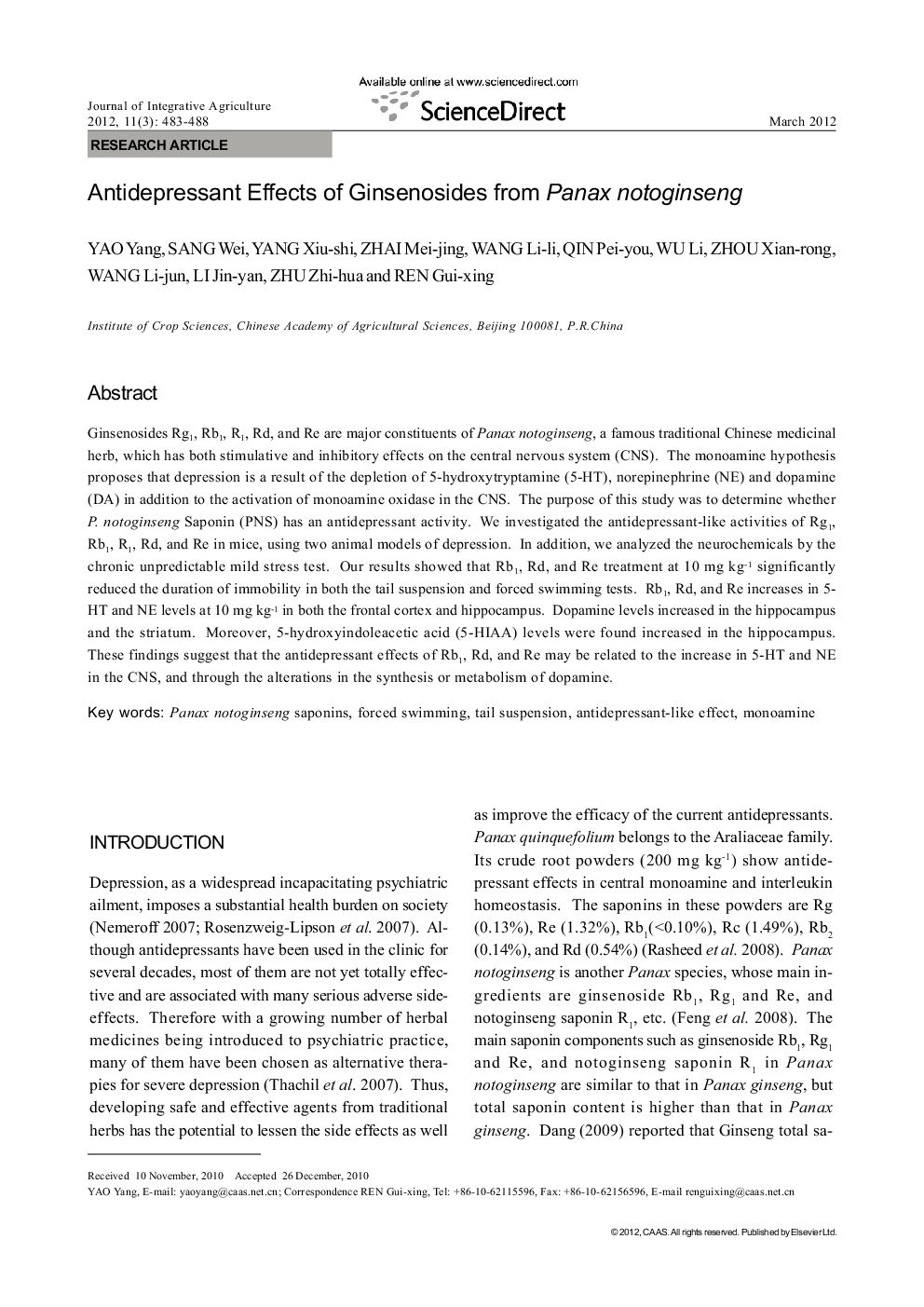| Article ID | Journal | Published Year | Pages | File Type |
|---|---|---|---|---|
| 4495266 | Journal of Integrative Agriculture | 2012 | 6 Pages |
Ginsenosides Rg1, Rb1, R1, Rd, and Re are major constituents of Panax notoginseng, a famous traditional Chinese medicinal herb, which has both stimulative and inhibitory effects on the central nervous system (CNS). The monoamine hypothesis proposes that depression is a result of the depletion of 5-hydroxytryptamine (5-HT), norepinephrine (NE) and dopamine (DA) in addition to the activation of monoamine oxidase in the CNS. The purpose of this study was to determine whether P. notoginseng Saponin (PNS) has an antidepressant activity. We investigated the antidepressant-like activities of Rg1, Rb1, R1, Rd, and Re in mice, using two animal models of depression. In addition, we analyzed the neurochemicals by the chronic unpredictable mild stress test. Our results showed that Rb1, Rd, and Re treatment at 10 mg kg−1 significantly reduced the duration of immobility in both the tail suspension and forced swimming tests. Rb1, Rd, and Re increases in 5-HT and NE levels at 10 mg kg−1 in both the frontal cortex and hippocampus. Dopamine levels increased in the hippocampus and the striatum. Moreover, 5-hydroxyindoleacetic acid (5-HIAA) levels were found increased in the hippocampus. These findings suggest that the antidepressant effects of Rb1, Rd, and Re may be related to the increase in 5-HT and NE in the CNS, and through the alterations in the synthesis or metabolism of dopamine.
